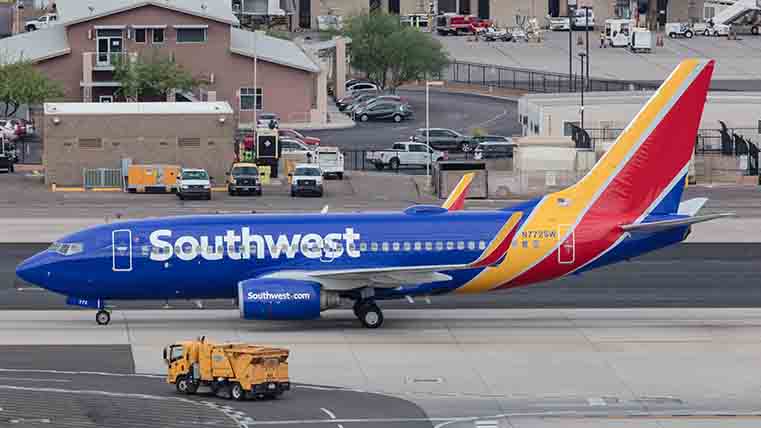Once revered for its low-cost fares and no-frills service, Southwest Airlines has recently encountered a series of challenges that have significantly impacted its operations and reputation. Factors contributing to this decline include increased competition from both legacy carriers and emerging budget airlines, which have adopted similar fare structures and customer service models. The rise of technological advances has also shifted customer expectations, demanding more sophisticated digital services that Southwest has struggled to keep pace with. Such operational difficulties have led to a decline in customer satisfaction, as travelers increasingly view the airline as no longer a top-tier option for budget travel.
Additionally, the airline’s reaction to recent industry turbulence, including staffing shortages and rising fuel prices, further exacerbated its struggles. Although Southwest has traditionally thrived on a culture of employee satisfaction and engagement, recent labor disputes and management controversies have caused internal fractures. Alongside external pressures, these internal challenges have resulted in operational disruptions and flight cancellations, tarnishing the airline’s once-stalwart reputation for reliability. As the aviation sector rebounds, the question remains whether Southwest can reinvent itself and reclaim its status as a leading carrier or if its current challenges will hinder its future growth aspirations says to Discoverturkey.
Operational Challenges: Addressing Staffing Shortages and System Inefficiencies
The operational landscape at Southwest Airlines has been significantly marred by persistent staffing shortages and systemic inefficiencies, eroding the once-cherished customer experience. Reports indicate that the airline struggled to maintain appropriate crew levels, leading to canceled flights and frustrated passengers. The hiring process, which was once a hallmark of Southwest’s culture, has faced delays and bureaucratic hurdles that have slowed down recruitment efforts. As a result, the airline has been understaffed during peak travel seasons, causing a ripple effect across its network as operational hiccups cascade into larger, systemic failures.
Moreover, inefficiencies in scheduling and resource allocation have compounded these staffing challenges. With outdated technology hampering operational responsiveness, crew members often found themselves entangled in a web of last-minute changes and miscommunication. This has bred a culture of uncertainty, where employees felt overworked and underappreciated. Key contributing factors to these inefficiencies include:
- Inflexible Scheduling Systems: Legacy software struggles to adapt to real-time demand fluctuations.
- Poor Communication Channels: Fragmented information flow between crew and management leads to confusion.
- Inconsistent Training Programs: Variability in training quality impacts employee readiness and morale.
As these challenges mount, the airline faces an uphill battle in reclaiming its once-stellar reputation and operational efficiency, a crucial endeavor that will require a concerted effort to innovate and adapt.
Customer Experience at a Crossroads: Rebuilding Loyalty in a Competitive Market
In recent years, Southwest Airlines has found itself navigating turbulent skies, struggling to maintain the loyalty of its customer base amidst fierce competition. Once celebrated for its friendly service and affordable fares, the airline is now facing criticism and declining satisfaction rates. Factors contributing to this shift include a series of operational challenges, such as flight cancellations, longer wait times, and insufficient customer support. These issues have not only frustrated travelers but have also led many to question whether Southwest’s iconic brand still embodies the core values it once promoted.
Moreover, the intense competitive landscape has forced Southwest to re-evaluate its strategies, pushing the airline into a corner where it must enhance its offerings to remain relevant. Key initiatives could include:
- Implementing advanced technology for real-time updates and customer service interventions.
- Revamping loyalty programs to provide greater rewards and benefits tailored to frequent flyers.
- Investing in employee training to ensure that the legendary customer service Southwest is known for is not just a relic of the past.
As the airline strives to reclaim its standing, it will be imperative to not only address current shortcomings but also proactively seek ways to strengthen connections with customers during their travel experiences. The road ahead is undoubtedly challenging, but with targeted strategic shifts, Southwest Airlines has the opportunity to rebuild the loyalty it has lost.
Innovative Strategies for Recovery: Recommendations to Reignite the Southwest Spirit
The revival of an iconic brand like Southwest Airlines requires a multifaceted approach that reengages both employees and customers with the essence of the company’s original spirit. First and foremost, a focus on enhancing employee morale is crucial. The airline must rekindle its commitment to staffing satisfaction by investing in robust training programs, promoting a culture that rewards exceptional service, and fostering open channels for feedback. By putting employees at the center of its recovery strategy, Southwest can inspire a workforce that is passionate about providing memorable experiences for travelers. Additionally, prioritizing mental health resources and demonstrating genuine care for the well-being of staff will further build loyalty and morale.
On the customer-facing side of operations, revisiting core values such as friendly service and operational reliability can reignite the Southwest spirit. Implementing initiatives like personalized travel experiences—where regular flyers receive special recognition and benefits—can strengthen customer bonds with the airline. Moreover, leveraging technology to simplify the booking process and enhance customer communication, such as real-time flight updates and personalized offers, will improve overall satisfaction. To complement these efforts, Southwest should explore partnerships with local businesses to create unique destination experiences, cultivating a community feel that resonates with both travelers and local audiences. This blend of employee engagement and customer-centric strategies can create a vibrant and resilient workforce that reflects the airline’s unique culture and values.